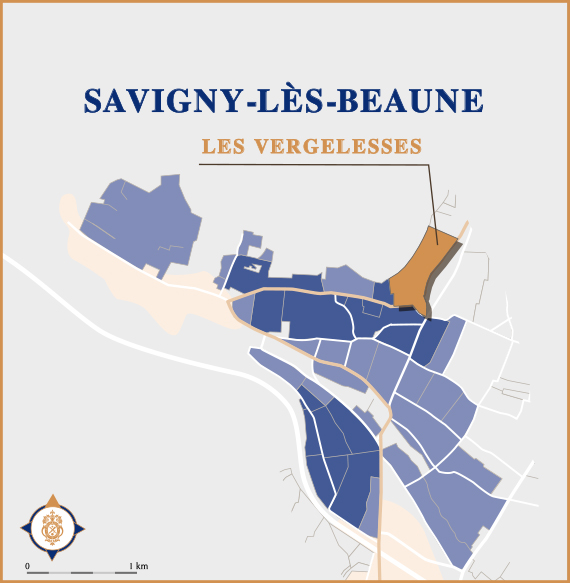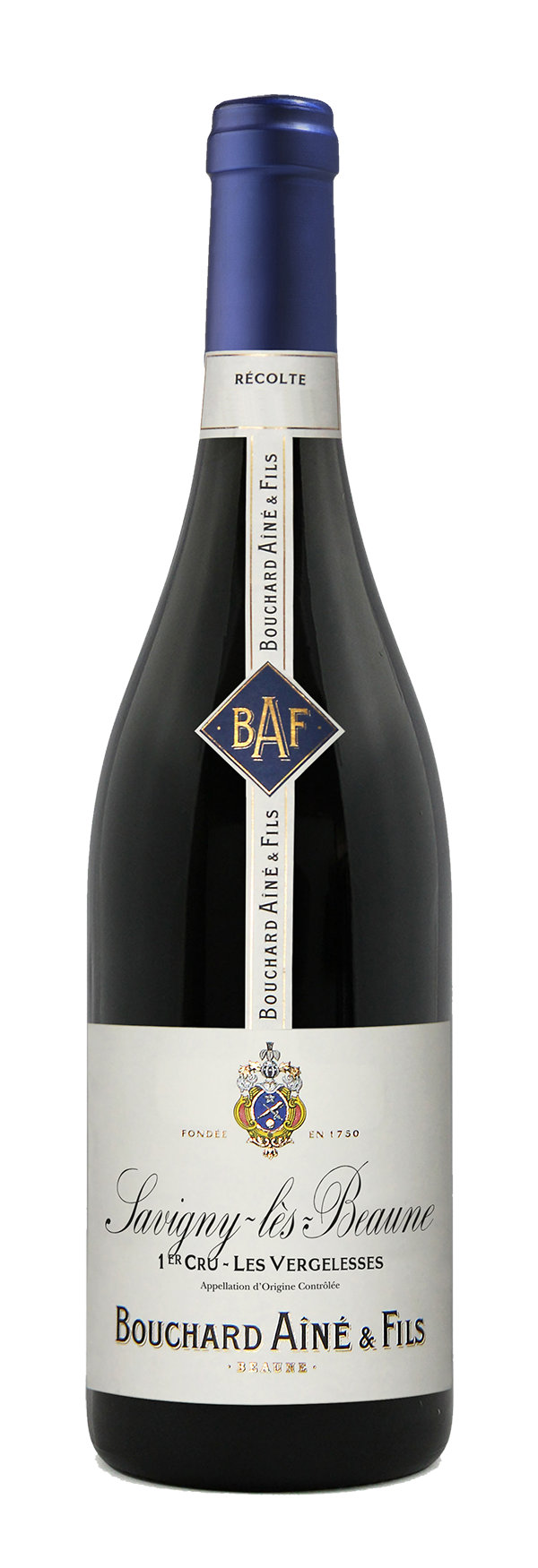SAVIGNY-LÈS-BEAUNE
PREMIER CRU
LES VERGELESSES 2019
SAVIGNY-LÈS-BEAUNE
PREMIER CRU
LES VERGELESSES 2019
Varietal
Tasting notes
Colour: Intense red.
Nose: The bouquet shows aromas of raspberries and red berries.
Palate: In the mouth, the wine presents richness and structure, with smooth tannins.
Food and wine pairing
Serving suggestions
Ageing potential
Origins
The Appellation d'Origine Contrôlée was instituted in 1937. The village of Savigny benefits from a unique situation that gives rise to two different types of wine: the neighbouring slope of Pernand-Vergelesses produces mineral, fruity and elegant wines, while the other, located near Mont Battois, produces richer nectars with more structure.
The Premier Cru vineyard, known as ‘Les Vergelesses’, lies on the border between the communes of Pernand and Savigny, facing south.
Vinification and maturing
Vinification then took place in open wooden vats with a long maceration period (about 3 weeks) suitable for getting the best extraction of all the components in the grapes. Punching down 2 times/day during the fermentation at a temperature of 30°C. Pumping over every 4 days.
16 months ageing in French oak barrels of 228 liters with 30% new oak.
Vintage : 2019
2019 was a unique and very changeable year. It brought its own stresses for a great many producers, while harvesting passed without a hitch. The end result has inspired enthusiasm amongst winemakers, surpassing expectations. The weather was hot and dry, but the wines are promising a freshness that will delight fans of Bourgogne wines, with an indulgent side to boot.
Since the start of the 20th century, every vintage that has ended with a “9” has been wonderful. The only downside to this one is below-average volumes. Winter was mild with temperatures higher than average in December, and again in February, when it was 2.2°C warmer than the norm. Rain was variable with a very wet December and much less precipitation in February. As such, the growth cycle started much earlier, with budburst slightly ahead of average in some areas.
Clement temperatures in March, up 1.1°C on seasonal norms across the region, allowed the vines to spring back to life. More advanced plots reached the mid-budburst stage in the first days of April. But cold weather then arrived and frost on the morning of 5 April in particular left its mark that was more or less pronounced from sector to sector, depending on how low the temperature fell and which stage the vines had reached. This had an impact on yields, particularly in the Mâconnais. Temperatures remained low and the frost returned on 12 and 15 April, but the damage was much less significant. The vines didn’t return to growth until mid-April, when temperatures rose once again and the mid-budburst stage was reached in later plots. In May, the vines enjoyed good growth as a wave of heat settled in the region and remained until early June when high winds and plunging temperatures were felt countrywide. This partially hindered flowering, which fell behind with fairly frequent episodes of shatter and millerandage.
Heat and a lack of rain were then the norm, with temperatures up 2.2°C on average across the region and rainfall down by 50% in the Yonne for example. In the majority of cases, the vines were in excellent health right through to harvest. Any occasional local issues with powdery mildew were quickly dealt with.
The little rain that fell in August helped the vines develop and triggered véraison. It varied a great deal across the region, resulting in significant differences in terms of the development of the vines from one plot to another, and sometimes even within the same plot. This continued through to the harvest. Overall, the vines stood up to this lack of rainfall pretty well, and showed good vigor through to picking. However, some places did suffer towards the end of the season, especially where the plants were younger, with the grapes suffering some scorching.
The fine weather continued through the end of August and into September, and ripening happened at a good pace. Concentration was an issue in a few spots in September, but millerandage ensured the grapes retained their acidity through to the end. Harvesting for the grapes used to make Crémant de Bourgogne began on 30 August, while that for grapes for still wines began a week later, and picking continued through to mid-October. This unusually long harvest was possible thanks to the excellent health of the grapes along with good weather. Given the differences in ripening from plot to plot, winegrowers were able to adapt to the pace the grapes matured. Location was not an issue - analysis of the maturity of the grapes and regular sampling of the berries were all that counted.





 PDF file
PDF file